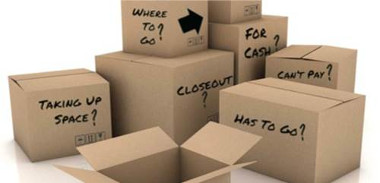Meaning Of Overstock Inventory

Overstock inventory is an excess amount of inventory that is not essential to the everyday operations of a business. This can also be called “surplus inventory”, “excess inventory” or “obsolete inventory” and It is extra stock that can be sold off without having an immediate impact on current sales. When the company determines it is in an overstock situation this can be the result of slow sales, overbuying, poor inventory management, supply chain disruptions ,or all of these combined. In any case excess inventory should be sold off or liquidated and converted to cash.Selling excess inventory is very important because it keeps the warehouse clean and generates cash flow.
Slow Sales. Slow sales often result in a company having overstock inventory. In this case the solution is to work on improving sales figures. Your company might consider offering salespeople an added bonus to sell the overstock inventory at a discounted price. This added incentive may be enough to get your sales force motivated to sell the merchandise by either contacting their regular customers or reaching out to new accounts. By turning this inventory it will free up valuable warehouse space for newer products. There are different ways tosell closeouts as they can be distributed online or to brick and mortar discount stores.
Overbuying. Over bought inventory can sometimes be remedied by working with the supplier to either give additional payment terms, or allow some or all of the merchandise to be returned. When an overstock inventory is the result of buying too much, there is nothing wrong with the product because it is in perfect condition; there is just too much of it on hand so it needs to be disposed of. If the overstock is due to to the company forecasting incorrectly, this should also be addressed so it does not happen in the future. In some cases the vendor will not accept returns and you will have to sell overstock inventory on the open market.
Poor Inventory Management. Inventory levels should be reviewed at least every 30 days to be sure your company is carrying the right amount of product, but not too much. This can be a fine line which is why it is so important to examine inventory regularly and sell surplus merchandise. If there is an overstock of some merchandise that is not selling it can be from poor analysis by your management team. In this case the best resolution is to be sure these team members have adequate training and the right software tools to do their jobs. inventory management means the right stock, at the right levels, in the right place, at the right time, and at the right cost. The key to reducing and even eliminating overstock inventory is proper inventory management and forecasting. In cases where there is still surplus inventory in the warehouse the most common solution is to discount heavily and sell excess inventory as quickly as possible.
Supply Chain Disruptions. Supply chains have been under an unprecedented amount of pressure due to tariffs introduced in 2019, followed by the pandemic of 2020. This massive interruption to product flow and sourcing may have resulted in your company having either not enough or too much inventory on hand. In the latter case the best solution is to discount the overstock inventory and sell it as quickly as possible.Keeping overstock in your warehouse is a costly mistake, and as supply chains begin to improve you will need your warehouse space to stock more current goods. Liquidating inventory is often the best solution.
In each of the above cases, overstock inventory should be disposed of and converted to cash as quickly as possible. The hidden cost of keeping excess inventory is high both in warehouse expenses and lost sales.Dead inventory takes up valuable warehouse space and prohibits the company from using that space to store current and more profitable inventory.



